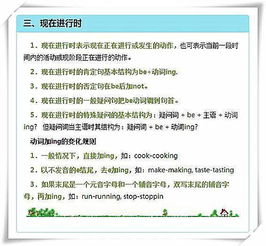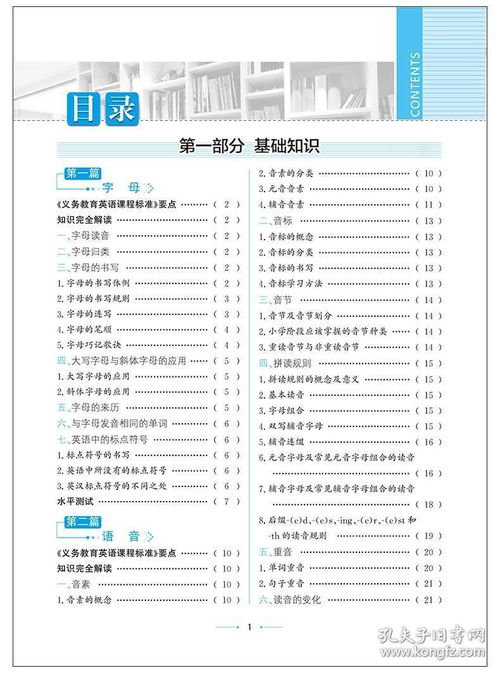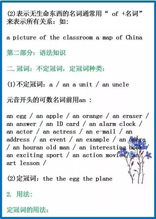小学英语课程题库(50道英语填空题带答案)
1.50道英语基础知识填空题 带答案
1特殊疑问句 What's your name? –I'm Liu Ying. –My name is Liu Ying.What's your number? -I'm Number One.What class are you in? –I'm in Class Two What grade are you in? –I'm in Grade One What row are you in? –I'm in Row One.What row are they in? –They're in Row 7 What class is she in? –She's in Class One, Grade One What colour is your bag? –It's black.What's his number? -He's Number One, in Row One.What's one plus two? -It's three.What's this? -It is a clock.What's that in English? -It's a book.What're these? –They are books.What're those? –They are cups.What can you see in the picture? –I can see a clock What can she see? –She can see a dog.What's in the room? –There is a desk.Who is this? –This is Joy. Who is that? –That is David.Who's not here? –Ann is not here.Who isn't at school today? –Li Ming and Wei Fang Who's that girl? –That's my sister, Joy.Who's that man? –That's my father.Who's on duty today? –I am.How old are you? –I'm eleven.How old is she? –She's seven.How old is Polly? –It's two.How many children are there in your class? –66 How many pens do you have? –I have 2 pens.How are you? –I'm fine, thanks.How is your father? –He's well.How do you do? –How do you do?Where is she? –I think she's at home.Where is the washroom? –It's over there.Where are her photos? –They're on the wall.Which is your friend? –The one in a hat.Which boy is Tom? –The boy on the bike.Whose clock is this? -It's his.Whose is this clock? -It's his.Whose shoes are these? -They're mine.2.一般疑问句 Are you Lin Tao? –Yes, I am.Are you in Row 4? –Yes, I am.Are you ten? –Yes, I am.Are you English? –Yes, I am Are these your English books? –Yes, they are.Are those your pens? –Yes, they are.Are we all here? –Yes, we are Are they on her desk? –Yes, they are.Are there two boys in the room? –Yes, there are Are there any girls in the room? –Yes, there are.Is one plus two three? –Yes, it is.Is this a cup? –Yes, it is.Is that a ruler? –Yes, it is.Is it a cake? –Yes, it is.Is it on the desk? –Yes, it is.Is everyone here today? –Yes, we are.Is she at school today? –Yes, she is.Is this your pencil-box? –Yes, it is.Is that my cup? –No, it isn't.Is there a bag on the bed? –Yes, there is.Do you know? –Yes, I do.Can you spell your name? –Yes, I can.Can we put our coats here? –Yes, you can.Can I see your licence? –Yes, you can。

2.小学复习资料英语
加油吧!一:学生易错词汇 1. a, an的选择: 元音字母开头的单词用an,辅音字母开头的单词用a. 2. am , is , are的选择: 单数用is , 复数用are. I 用 am , you 用 are. 3. have , has 的选择: 表示某人有某物.单数用has , 复数用have. I ,you 用 have . 4. there is, there are 的选择:表示某地有某物,某人.单数用there is , 复数用there are. 5. some, any 的选择:肯定句用some, 疑问句和否定句用any. 6. 疑问词的选择:what (什么) who (谁) where (哪里) whose (谁的) why(为什么)when(什么时候)which(哪一个)how old (多大) how many (多少)how much(多少钱) 二:形容词比较级详解 当我们需要对事物作出比较时,需要用到比较级.比较级的句子结构通常是: 什么 + 动词be (am , is , are ) + 形容词比较级 + than(比)+ 什么 ,如: I'm taller and heavier than you. (我比你更高和更重.) An elephant is bigger than a tiger. (一只大象比一只老虎更大.) 形容词的比较级是在形容词的基础上变化而来的,它的变化规则是: ① 一般的直接在词尾加er ,如 tall - taller , strong - stronger , ② 以e结尾的,直接加r ,如 fine – finer , ③ 以辅音字母加y结尾的,先改y为i再加er,如funny - funnier ④ 双写最后的字母再加er,如big – bigger, thin – thinner ,hot – hotter ☆注意☆ 比较的两者应该是互相对应的可比较的东西. 典型错误:My hair is longer than you.(我的头发比你更长.) 比较的两者是我的头发,你(整个人),那么比较的对象就没有可比性. 应该改为:My hair is longer than yours. 或My hair is longer than your hair. 比较级专项练习: 一,从方框中选出合适的单词完成句子 heavy tall long big (1) How is the Yellow River (2) How is Mr Green He's 175cm. (3) How are your feet I wear size 18. (4)How is the fish It's 2kg. 二,根据句意写出所缺的单词 (1) I'm 12 years old. You're 14. I'm than you. (2) A rabbit's tail is than a monkey's tail. (3) An elephant is than a pig. (4) A lake is than a sea. (5) A basketball is than a football. 三,根据中文完成句子. (1) 我比我的弟弟大三岁. I'm than my brother. (2) 这棵树要比那棵树高. This tree than that one. (3) 你比他矮四厘米. You are than he. (4) 谁比你重 than you 三:动词过去式详解 动词的过去式的构成规则有: A,规则动词 ① 一般直接在动词的后面加ed:如 worked , learned , cleaned , visited ② 以e结尾的动词直接加d:如 lived , danced , used ③ 以辅音字母加y结尾的动词要改y为i再加ed(此类动词较少)如 study – studied carry – carried worry – worried (注意play,stay不是辅音字母加y,所以不属于此类) ④ 双写最后一个字母(此类动词较少)如 stopped B,不规则动词(此类词并无规则,须熟记)小学阶段要记住以下动词的原形和过去式:sing – sang , eat – ate , see – saw , have – had , do – did , go - went , take - took , buy - bought , get - got , read - read ,fly - flew , am/is - was , are - were , say - said , leave - left , swim - swam , tell - told , draw - drew , come - came , lose - lost , find - found , drink - drank , hurt - hurt , feel - felt 四:动词现在分词详解 动词的ing形式的构成规则: ① 一般的直接在后面加上ing , 如doing , going , working , singing , eating ② 以e 结尾的动词,要先去e再加ing ,如having , writing ③ 双写最后一个字母的(此类动词极少)有:running , swimming , sitting , getting 五:人称和数 人称代词 物主代词 主格 宾格 第一 人称 单数 I(我) me my(我的) 复数 we(我们) us our(我们的) 第二 人称 单数 you(你) you your(你的) 复数 you(你们) you your(你们的) 第三 人称 单数 he(他) him his(他的) she(她) her her(她的) it(它) it its(它的) 复数 they(他们/她们/它们) them their(他们的/她们的/它们的) 六:句型专项归类 肯定句:是指用肯定的语气来陈述的句子,如:I'm a student. She is a doctor. He works in a hospital. There are four fans in our classroom. He will eat lunch at 12:00. I watched TV yesterday evening. 2,否定句:含有否定词或表示否定意义词的句子,如:I'm not a student. She is not (isn't) a doctor. He does not (doesn't) work in a hospital. There are not (aren't) four fans in our classroom. He will not (won't) eat lunch at 12:00. I did not (didn't) watch TV yesterday evening. ☆注意☆ 小结:否定句主要是在肯定句的基础上加上了否定词 "not".有动词be的句子则"not"加在be后面,可缩写成"isn't,aren't",但am not 一般都分开写.没有动词be的句子则要先在主要动词的前面加上一个助动词(do,does,did),然后在它后面加上"not",你也可以把它们缩写在一起如"don't , doesn't , didn't ).这三个助动词要根据人称和时态来选择,其中"does"只用于一般现在时主语是第三人称单数的情况,而"did"只用于一般过去时,不论主语是什么人称和数,都用"did" . 3,一般疑问句:是指询问事实的句子,此类句子必须用"yes",或"no"来回答. 如:Are you a student Yes, I am / No, I'm not. Is she a doctor Yes, she is. / No, she 。

3.小学英语基础知识手册的内容简介
本书具有以下鲜明特点:
一、依标据本,备生性强
本书以《英语课程标准》为依据,以人教课标版等全国各主流版本的小学英语教材为基础,力求贴近学生平时学习中的重点、难点、疑点、易错点、易混点、延伸点,帮助广大师生扫除教与学过程中的“拦路虎”。
二、知识完备,备查性强
本书知识体系包括“基础知识篇、语法知识篇、交际用语篇、阅读理解篇、书面表达篇、课内外活动篇”六个部分(并加附录),囊括了小学英语基础知识的全部内容。可以说,一册在手,小学英语基础知识全部拥有。每一部分基础知识按照《英语课程标准》分成若干知识点进行讲解,科学系统,条理清楚,为广大小学师生建立了一个完备的英语基础知识体系。
三、注重实际,针对性强
本书针对教师教学和学生学习的实际,结合小学英语学科特点,在加强基础知识记忆的同时,更注重对学生基本技能的培养。我们对易错点、易混点进行“思维误区警示”;对解题方法、技巧进行“方法技巧归纳”;对难点、疑点进行“难点疑点解析”,对延伸点、拓展点进行“相关资料链接”。达到知识与方法统一,课内与课外结合。
四、图文并茂,趣味性强
我们说,授之以渔,不如授之以娱。为了培养小学生学习英语的兴趣,我们对每个知识点的讲解力求图文并茂,对方法技巧的点拨力求以歌诀、童谣形式展现。让学生在快乐中学习。
4.小学英语,第四大题全部,急,答好采纳,悬赏可加 向左转 爱
1 Do I draw on the wall? Yes, please do。
No, please don't。 2 Can Tom cook the meals? Yes, he can。
No, he cannot。 3 Let's go hiking, shall we? Yes, we shall。
No, we shall not。 4 Let him watch cartoons, shall we? Yes, we shall。
No, we shall not。 5 Do you read newspapers on Sunday? Yes, I do。
No, I don't。 6 Do they have dinner at home? Yes, they do。
No, they do not。 7 Does she go to school on foot? Yes, she does。
No, she doesn't。 8 Is there any milk in the glass? Yes, there is。
No, there isn't。 9 Is this a crayon? Yes, it is。
No, it isn't。 10 Does Sarah like reading books? Yes, she does。
No, she doesn't。

相关推荐
声明:本网站尊重并保护知识产权,根据《信息网络传播权保护条例》,如果我们转载的作品侵犯了您的权利,请在一个月内通知我们,我们会及时删除。
蜀ICP备2020033479号-4 Copyright © 2016 学习鸟. 页面生成时间:3.173秒









